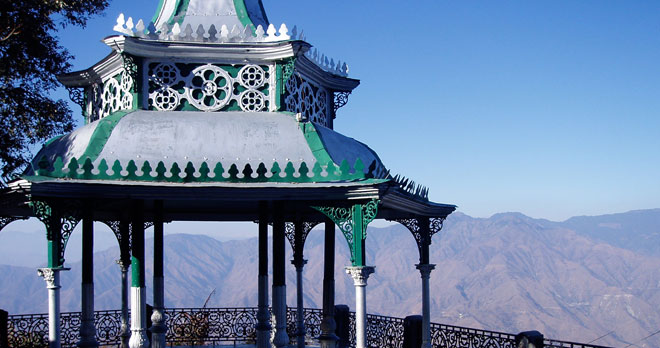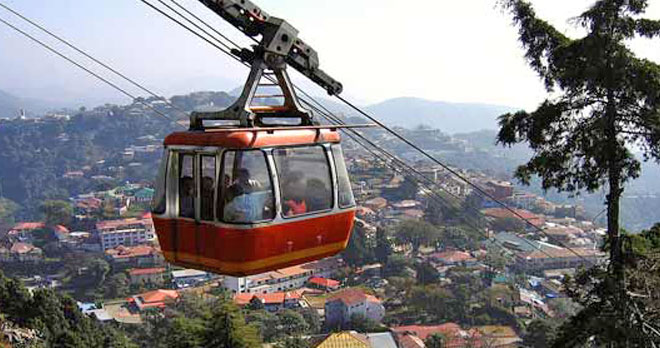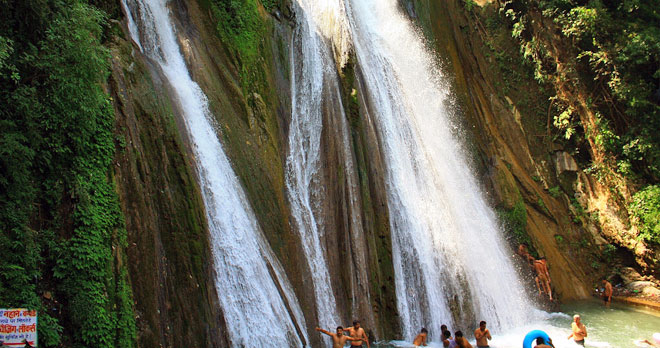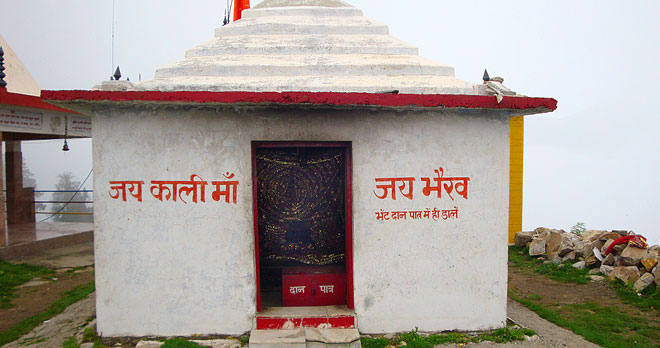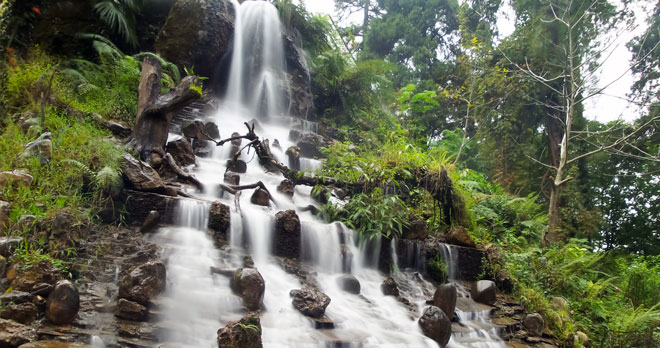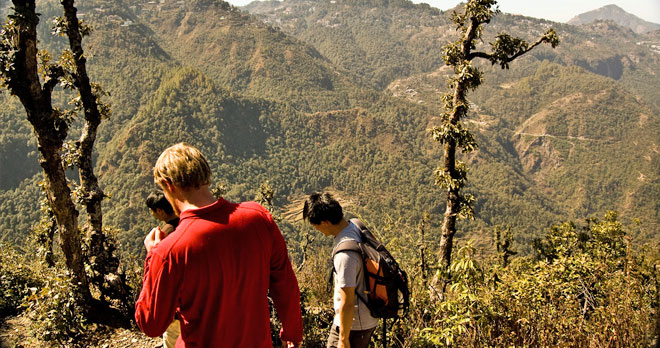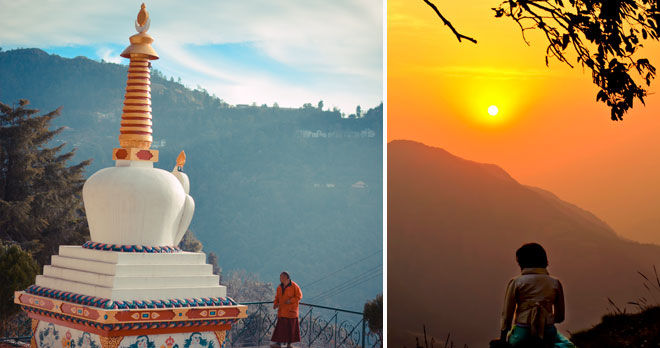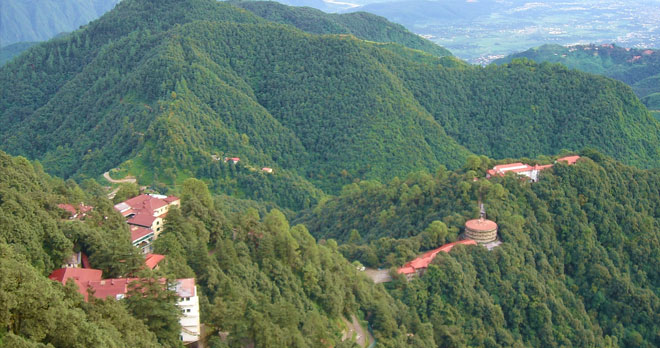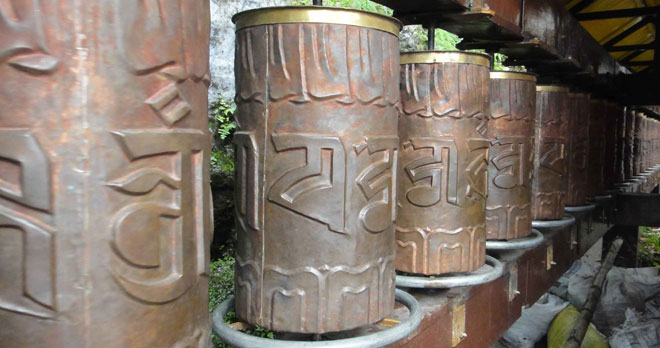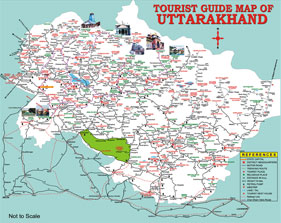Mussoorie
The Queen of Hills is situated in the foot hill of the Himalaya, at 2000 meters from the sea level. The serenity, wonderful hills, flora and fauna, attractive Doon Valley and Shivalik ranges are some of the major crowd-pullers in Mussoorie, attracting visitors in hundreds and thousands every year. Not only the Indians but travelers from abroad also visit Mussoorie regularly.
They city Mussoorie is a derivative of the word 'Mansoor', a type of shrub. Also called Mansoori by many Indians, the city is counted among the well known hill stations in the state of Uttarakhand as well as India. It is also very famous by the name of "Queen of Hills". Mostly the town is visited by married couples who come here for honeymoon, so it is also popular as a honeymoon destination in India. This beautiful city was discovered by a British military officer while on an expedition in the region.
Mussoorie Tourist Places
Lakemist mussoorie:
Popularly known as the Queen of Hills, this charming hill station, 34 kms from Dehradun is situated at an altitude of 2003 mts in the Garhwal hills. above sea-level. Mussoorie is one the beautiful hill stations in India and the most frequently visited. It provides excellent respite to people who want relief from the hot sultry conditions of the plains, especially since it is close enough to the capital to make just weekend trip. Also, major Hindu pilgrimage sites like Kedarnath, Badrinath, Gangotri, Yamunotri, Haridwar, Rishikesh are not far from this place. In 1820, Captain Young of the British army was influenced by the beauty of this place and made it his residence. The name, Mussoorie is derived from plants of 'Mussoorie' which were found in abundance here. After its discovery, this hill station gradually developed as a centre of education, business, tourism and beauty.
Kempty Fall:
Located 13 km from Mussoorie, the Kempty Falls lie amidst a mass of hills. Sparkling water gushes down from a height of 4,500 ft and further segregates into five different falls (40 ft each) at this place. Originally, the British conducted tea-parties here. Thus, the colloquial name 'Camp-Tea' earned it the name 'Kempty'. The falls remain open to public from March to July.
The Mall Road:
The Mall is the heart of Mussoorie. A walk through the mall throws glimpses of the colonial period with the benches and lampposts lined up and is a beautiful experience. Being in the center of the city, one has to pass the Mall enroute to any place in the city. The 1980s style video game parlors, skating rinks, the Methodist Church are all attractions in this area. The skating rinks are popular among children and adults alike.
Lal Tibba (Depot Hill):
The highest point in Mussoorie, Lal Tibba gives you splendid view of the landscape around. Located in Landour, it is the oldest inhabited area of the place. Old British architectures adorn the place and impart it an antique charm. From here, one can have clear views of the snow capped Himalayan peaks and places like Badrinath and Kedarnath dotting the horizon.
Camel's Back Point / Camel's Back:
Road The road borrows its name from a large rock here that looks like a camel's back. One can see the rock from the 'Mussoorie Public School'. The road starts from Kurli Bazaar and goes up to the Library Bazaar. Thick deodar trees girdle this 3 km long stretch. The atmosphere is very serene and ideal for pony-riding and watching the sun playing 'hide and seek' in the Himalayas.
Gun Hill:
At a height of 2122 m, this is the second highest peak of the town. During the colonial era, a gun was placed atop the hill and fired exactly at mid-day to announce the time. Thus, the place derived its name as 'Gun Hill'. One can have stunning views of the landscape and other Himalayan Ranges from the place. A 400 m ropeway connects the Mall to this place. Walking is another alternative.
Mussoorie Lake:
This newly made lake is situated on the Dehradun road, at a distance of 6 km from Mussoorie. Developed by the city board and the Mussoorie Dehradun Development Authority, this lake is a famous picnic spot of the place. With a beautiful backdrop, the place is also famous for its pedal-boating facilities. The lake also offers enchanting view of Doon Valley and the surrounding places.
George Everest's House:
Park Estate is where one can find the remains of the building and laboratory of Sir George Everest,the Surveyor-General of India from 1830 to 1843. It is after George Everest that the world's highest peak Mt. Everest is named.[3] It is 6 km from Gandhi Chowk / Library Bazaar and is accessible by vehicle, although the road is very rough beyond Haathi Paon. The place provides an enchanting view of Doon Valley on one side and a panoramic view of the Aglar River valley and the snow peaks of the Himalayan ranges on the other. It is a wonderful walk from Library Bazaar and a picnic spot.
Municipal Gardens:
Located about 3 km from Mussoorie, this beautiful picnic spot is easily accessible by a pony, rickshaw or car. Housed amidst bamboo and deodar trees, it was earlier known as the 'Company Garden'. The place has an artificial lake that provides boating facilities. Varieties of exotic flowers are also found in the gardens. One can also reach the place on foot, via Waverly Convent Road.
Jwalaji Temple:
This famous Hindu temple is located at a distance of 9 km from Mussoorie. Dedicated to Goddess 'Durga', this temple is situated atop the Benog Hill, at a height of 2100 m. Enveloped by thick forests from all sides; the temple poses a striking picture. Moreover, one can have breathtaking view of the Himalayan peaks, Doon Valley and the Yamuna valley from this site.
Jharipani Falls and Bhatta Falls:
The Jharipani and the Bhatta Falls are two major waterfalls of Mussoorie. Jharipani Fall is located 8.5 m from Mussoorie on the Mussoorie-Jharipani Road and can be reached by a vehicle, up to a distance of 7 km. The rest of the journey (1.5 km) has to be covered on foot. Bhatta Fall is located on the Mussoorie- Dehradun Road and is an ideal spot for bathing and picnicking.
Tibetan Buddhist Temple:
Set up by the Tibetan population in Mussoorie, the Tibetan Buddhist temple is also known as Shedup Choepelling temple and is located on the Happy Valley road close to the IAS Academy. The temple can be visited between 7 am to 5 pm. Dalai Lama took refuge in Mussoorie after he fled Tibet and was granted land in Dharamshala by the then Prime Minister Pandit Jawaharlal Nehru. The Tibetan Buddhist temple has a divine atmosphere, and those seeking solace and peace of mind must make it a point to visit here. To add to the serenity are the clay lamps in the lamp house and the prayer flags.








